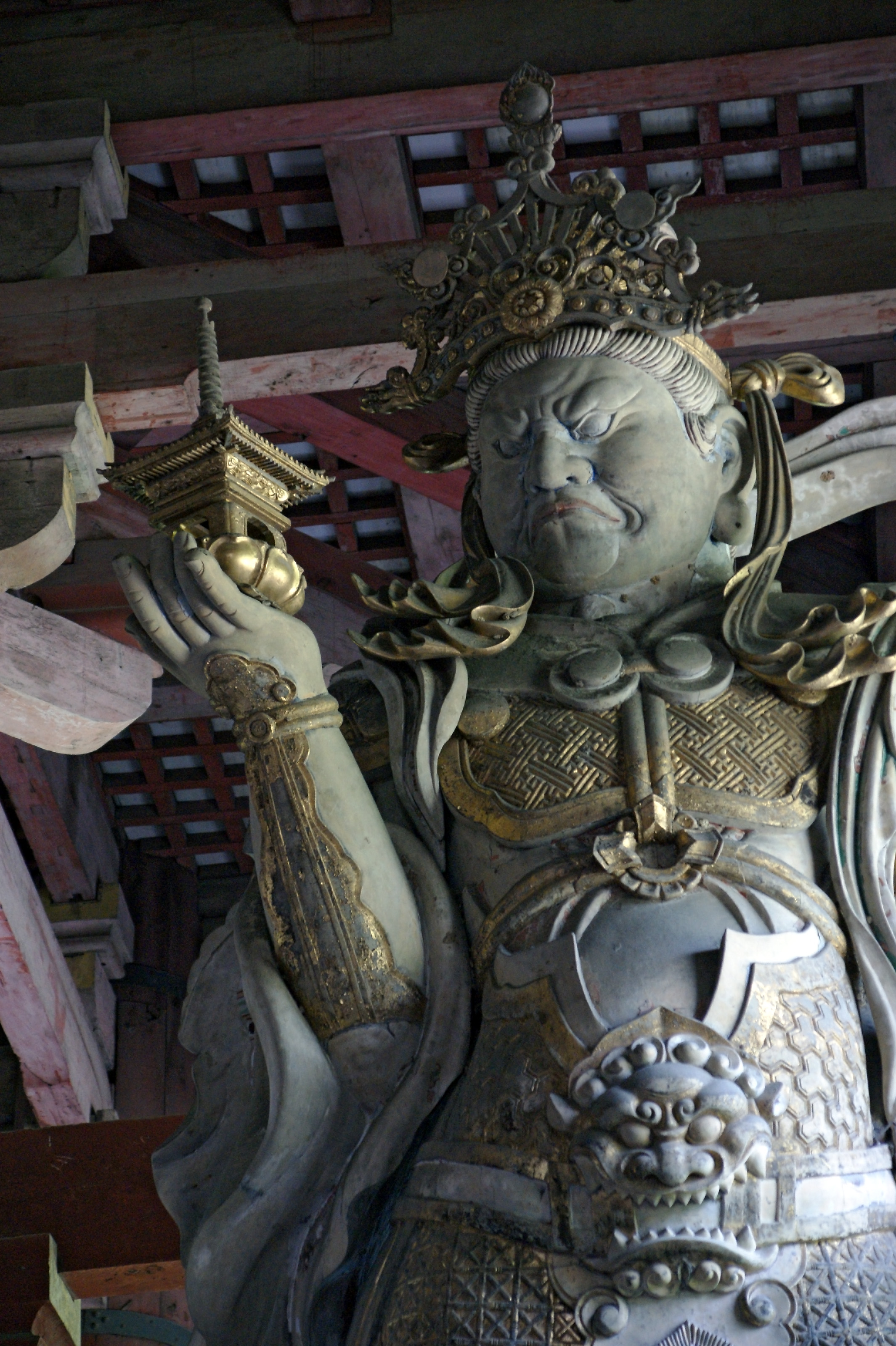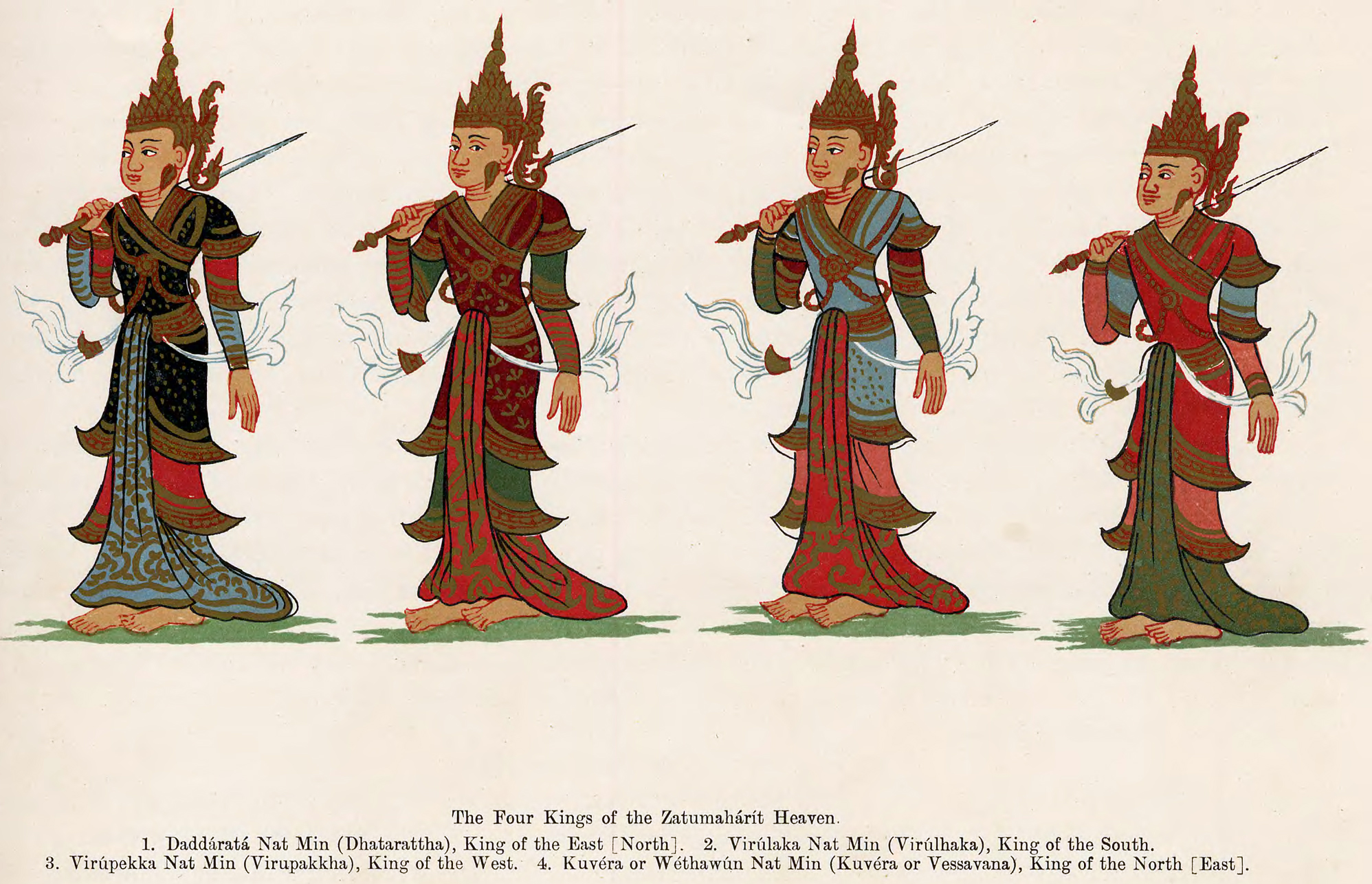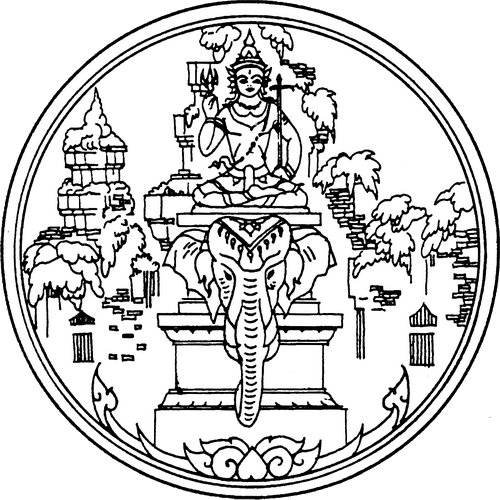|
Kōdōkan Shitennō
Four Guardians of the Kōdōkan refers to the four notable judo competitors of the early Kōdōkan: Tomita Tsunejirō, Yamashita Yoshitsugu, Yokoyama Sakujiro, and Saigō Shirō. Four Guardians of the Kōdōkan " Kōdōkan Shiten'nō" (講道館四天王) literally translates as ''Four Heavenly Kings'' ''of the Kōdōkan''. '' Shiten'nō'' refers to four ''Devarajas'', Hindu gods, historically adapted by Japanese Buddhism. Traditionally, the Four Heavenly Kings are the guardian gods that are worshipped as the protecting deities of Buddhist sanctuaries. When Kanō Jigorō began to develop judo from jujutsu, his efforts met with opposition from jujutsu practitioners. However, Kano drew a loyal following that included exceptional fighters. Hence the term "Four Guardians of the Kōdōkan" came into existence referring to Tomita Tsunejirō along with Yamashita Yoshitsugu, Yokoyama Sakujiro, and Saigō Shirō. See also * Shitennō (samurai) *Shitennō (Tokugawa clan) ... [...More Info...] [...Related Items...] OR: [Wikipedia] [Google] [Baidu] |
Kodokan
The , or ''Kōdōkan'' (講道館), is the headquarters of the worldwide judo community. The ''kōdōkan'' was founded in 1882 by Kanō Jigorō, the founder of judo, and is now an eight-story building in Tokyo. Etymology Literally, ''kō'' (講) means "to lecture", ''dō'' (道) means "gendai budo, way," and ''kan'' (館) is "a public building". Together it can be translated as "a place for the study of the way." Function The Kodokan Institute offers classes for those who want to master judo. The program is authorized as a non-regular school by the Tokyo Metropolitan Government. Its courses include the theories and practice of judo, and matters of general education. The course is divided into two parts: a general course for novices, and special courses for those who have completed the general course or its equivalent. The Kodokan also issues ranks, and many ''judoka'' (practitioners of judo) around the world become Kodokan members and have their ranks registered with the ... [...More Info...] [...Related Items...] OR: [Wikipedia] [Google] [Baidu] |
Shitennō (samurai)
The Four Heavenly Kings are four Buddhist gods or ''devas'', each of whom is believed to watch over one cardinal direction of the world. The Hall of Four Heavenly Kings is a standard component of Chinese Buddhist temples. Names The Kings are collectively named as follows: Individually, they have different names and features. File:Guardian of Phra Meru Mas of Bhumibol Adulyadej - Vessavana (right side).jpg, Vaiśravaṇa of the north direction, king of yakṣas. File:Guardian of Phra Meru Mas of Bhumibol Adulyadej - Virulhaka (right side).jpg, Virūḍhaka of the south direction, king of kumbhāṇḍas. File:Guardian of Phra Meru Mas of Bhumibol Adulyadej - Dhatarattha (left side).jpg, Dhṛtarāṣṭra of the east direction, king of gandharvas. File:Guardian of Phra Meru Mas of Bhumibol Adulyadej - Virupakkha (left side).jpg, Virūpākṣa of the west direction, king of nāgas. Mythology All four Kings serve Śakra (Buddhism), , the lord of the devas of . On the 8th ... [...More Info...] [...Related Items...] OR: [Wikipedia] [Google] [Baidu] |
Human Kinetics
Kinesiology () is the scientific study of human body movement. Kinesiology addresses physiological, anatomical, biomechanical, pathological, neuropsychological principles and mechanisms of movement. Applications of kinesiology to human health include biomechanics and orthopedics; strength and conditioning; sport psychology; motor control; skill acquisition and motor learning; methods of rehabilitation, such as physical and occupational therapy; and sport and exercise physiology. Studies of human and animal motion include measures from motion tracking systems, electrophysiology of muscle and brain activity, various methods for monitoring physiological function, and other behavioral and cognitive research techniques. Basics Kinesiology studies the science of human movement, performance, and function by applying the fundamental sciences of cell biology, molecular biology, chemistry, biochemistry, biophysics, biomechanics, biomathematics, biostatistics, anatomy, physiology, exe ... [...More Info...] [...Related Items...] OR: [Wikipedia] [Google] [Baidu] |
Jujutsu
Jujutsu ( , or ), also known as jiu-jitsu and ju-jitsu (both ), is a Japanese martial art and a system of close combat that can be used in a defensive or offensive manner to kill or subdue one or more weaponless or armed and armored opponents. A subset of techniques from certain styles of jujutsu were used to develop many modern martial arts and combat sports, such as judo, aikido, sambo, Brazilian jiu-jitsu, ARB, and mixed martial arts. Characteristics " Jū" can be translated as "gentle, soft, supple, flexible, pliable, or yielding", and " jutsu" can be translated as "art or technique". "Jujutsu" thus has the meaning of "yielding-art", as its core philosophy is to manipulate the opponent's force against themself rather than confronting it with one's own force. Jujutsu developed to combat the samurai of feudal Japan as a method for defeating an armed and armored opponent in which one uses no form of weapon, or only a short weapon. Because striking against an armored ... [...More Info...] [...Related Items...] OR: [Wikipedia] [Google] [Baidu] |
Judo
is an unarmed gendai budō, modern Japanese martial art, combat sport, Olympic sport (since 1964), and the most prominent form of jacket wrestling competed internationally.『日本大百科全書』電子版【柔道】(CD-ROM version of Encyclopedia Nipponica, "Judo"). Judo was created in 1882 by Kanō Jigorō () as an eclectic martial art, distinguishing itself from its predecessors (primarily Tenjin Shin'yō-ryū, Tenjin Shinyo-ryu jujutsu and Kitō-ryū jujutsu) due to an emphasis on "randori" (, lit. 'free sparring') instead of alongside its removal of striking and weapon training elements. Judo rose to prominence for its dominance over Kodokan–Totsuka rivalry, established jujutsu schools in tournaments hosted by the Tokyo Metropolitan Police Department (警視庁武術大会, ''Keishicho Bujutsu Taikai''), resulting in its adoption as the department's primary martial art. A judo practitioner is called a , and the judo uniform is called . The objective of competitive ju ... [...More Info...] [...Related Items...] OR: [Wikipedia] [Google] [Baidu] |
Kanō Jigorō
was a Japanese judoka, educator, politician, and the founder of judo. Judo was one of the first Japanese martial arts to gain widespread international recognition, and the first to become an official Olympic Games, Olympic sport. Pedagogical innovations attributed to Kanō include the use of Rank in judo#Belt colors, black and white belts, and the introduction of dan ranking to show the relative ranking among members of a martial-art-style. Well-known mottoes attributed to Kanō include and . In his professional life, Kanō was an education, educator. Important postings included serving as director of primary education for the from 1898 to 1901, and as president of Tokyo Higher Normal School from 1900 until 1920.Strictly speaking, the name was Tokyo Normal School from 1901 until 1903, and Tokyo Higher Normal School from 1903 to 1924. Tokyo Higher Normal School is today viewed as an ancestor of the Institute of Health and Sport Sciences at University of Tsukuba. See thInstitu ... [...More Info...] [...Related Items...] OR: [Wikipedia] [Google] [Baidu] |
Tuttle Publishing
Tuttle Publishing, originally the Charles E. Tuttle Company, is a book publishing company that includes Tuttle, Periplus Editions, and Journey Editions.Tutttle Publishing: About us Retrieved on April 17, 2010.Grant, T. (1997): ''International directory of company histories'' (Vol. 86, 2nd ed., pp. 404–405). Chicago, IL: Saint James Press. () A company profile describes it as an "International publisher of innovative books on design, cooking, martial arts, language, travel and spirituality with a focus on China, Japan and Southeast Asia."The London Book Fair: Tuttle Publishing ... [...More Info...] [...Related Items...] OR: [Wikipedia] [Google] [Baidu] |
Four Heavenly Kings
The Four Heavenly Kings are four Buddhism, Buddhist gods or Deva (Buddhism), ''devas'', each of whom is believed to watch over one cardinal direction of the world. The Hall of Four Heavenly Kings is a standard component of Chinese Buddhism, Chinese Buddhist Buddhist temple, temples. Names The Kings are collectively named as follows: Individually, they have different names and features. File:Guardian of Phra Meru Mas of Bhumibol Adulyadej - Vessavana (right side).jpg, Vaiśravaṇa of the north direction, king of yakṣas. File:Guardian of Phra Meru Mas of Bhumibol Adulyadej - Virulhaka (right side).jpg, Virūḍhaka of the south direction, king of kumbhāṇḍas. File:Guardian of Phra Meru Mas of Bhumibol Adulyadej - Dhatarattha (left side).jpg, Dhṛtarāṣṭra of the east direction, king of gandharvas. File:Guardian of Phra Meru Mas of Bhumibol Adulyadej - Virupakkha (left side).jpg, Virūpākṣa of the west direction, king of nāgas. Mythology All four Kings ser ... [...More Info...] [...Related Items...] OR: [Wikipedia] [Google] [Baidu] |
Japanese Buddhism
Buddhism was first established in Japan in the 6th century CE. Most of the Japanese Buddhists belong to new schools of Buddhism which were established in the Kamakura period (1185-1333). During the Edo period (1603–1868), Buddhism was controlled by the feudal Shogunate. The Meiji period (1868–1912) saw a strong response against Buddhism, with persecution and a forced separation between Buddhism and Shinto ('' Shinbutsu bunri''). The largest sects of Japanese Buddhism are Pure Land Buddhism with 22 million believers, followed by Nichiren Buddhism with 10 million believers, Shingon Buddhism with 5.4 million, Zen Buddhism with 5.3 million, Tendai Buddhism with 2.8 million, and only about 700,000 for the six old schools established in the Nara period (710-794). History Early Buddhism (5th-13th century) Arrival and initial spread of Buddhism Originating in India, Buddhism arrived in Japan by first making its way to China and Korea through the Silk Road and then tr ... [...More Info...] [...Related Items...] OR: [Wikipedia] [Google] [Baidu] |
Tomita Tsunejirō
, born , was the earliest disciple of judo. His name appears in the first line of the enrollment book of the Kōdōkan. . Tomita, together with Saigō Shirō, became the first in the history of judo to be awarded the rank of Shodan by the founder of judo, Kanō Jigorō, who established the ranking system that is now commonly used in various martial arts around the world. Tomita was known as one of the "Four Kings" of Kōdōkan judo for his victorious efforts in competing against jujitsu schools. He was awarded 7th dan upon his death on January 13, 1937. Early life As the earliest student at the Kodokan, Tomita was known as Tsunejiro Yamada. He was adopted by a family named Tomita and his name was therefore changed. He entered the Kodokan in June 1882 as an ''uchi deshi'' or live-in student at the recommendation of Jigoro Kano's father. He became Kano's usual training partner. Although he was the least physically gifted of Kano's earlier students, he was dedicated and stron ... [...More Info...] [...Related Items...] OR: [Wikipedia] [Google] [Baidu] |
Hindu Gods
Hindu deities are the gods and goddesses in Hinduism. Deities in Hinduism are as diverse as its traditions, and a Hindu can choose to be polytheistic, pantheistic, monotheistic, monistic, even agnostic, atheistic, or humanist.Julius J. Lipner (2009), Hindus: Their Religious Beliefs and Practices, 2nd edition, Routledge, , p. 8; Quote: "(...) one need not be religious in the minimal sense described to be accepted as a Hindu by Hindus, or describe oneself perfectly validly as Hindu. One may be polytheistic or monotheistic, monistic or pantheistic, even an agnostic, humanist or atheist, and still be considered a Hindu." The terms and epithets for deities within the diverse traditions of Hinduism vary, and include Deva (Hinduism), Deva, Devi, Ishvara, Ishvari, Bhagavan, Bhagavān and Bhagavathi, Bhagavati. The deities of Hinduism have evolved from the Vedic era (2nd millennium BCE) through the medieval era (1st millennium CE), regionally within Nepal, Pakistan, India and in Sout ... [...More Info...] [...Related Items...] OR: [Wikipedia] [Google] [Baidu] |






